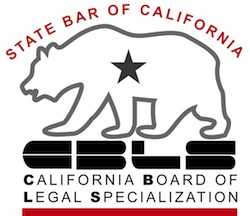
Is the Chapter 7 trustee going to sell your house when there’s $5000 in non exempt equity?
Do you have to pay the total of the equity in your assets to creditors in Chapter 13 under the liquidation test?
Far from it.
Just because you have equity on paper does not mean a bankruptcy trustee is going to sell your house.
Yet too many people image their assets confiscated by a Chapter 7 trustee when the value is slightly over the exemption. In Chapter 13, they image paying creditors every dollar of value over the exemption. In each case, they don’t understand bankruptcy liquidation.
Let’s look at the bankruptcy liquidation test in Chapter 13, since it is one prong of the plan confirmation tests: it asks what would your creditors get if you had elected to file a Chapter 7 liquidation proceeding rather than 13.
How the liquidation analysis works
The bankruptcy liquidation test is central to every form of consumer bankruptcy. Yet too many think the formula is
Assets minus Secured Debts minus Exemptions = Distributable estate
Not by a long shot. So let’s walk through the elements of a comprehensive liquidation analysis.
Assets, tangible and intangible
Start with identifying assets. Tangible assets like homes and cars are easy to identify. A step less obvious is money in the bank. And then there are legal rights that may be worth money, like interests in a probate estate, membership in a class action suit, or an employment-based claim.
All of those things are assets. And unless there is an exception in 541, they become assets of the estate.
There you have the gross value of assets for your liquidation analysis. On to deductions.
Liens lessen the total
It’s black letter law that unavoidable liens are paid from the collateral securing the lien. The number we’re looking for is the payoff of the loan, including fees, delinquent payments, and escrow advances. It’s not necessarily the principal balance.
Property taxes, both delinquent and currently due, must be paid from any bankruptcy sale, before there is money for anyone else in the case.
Which brings us to judgment liens and statutory liens. Again, any sale proceeds are reduced by the current payoff of any secured liens.
Exemptions shrink the pot
The first and easiest deduction in the liquidation analysis is exemptions. Out of that pot of values you calculated above, the debtor can extract from the estate the items which are exempt. Remember, too, that the debtor may claim an exemption in involuntary, prepetition transfers that are recovered. 522(g).
Costs of administration come off the top
Part of the trustee’s calculation when considering whether to administer an assets is assessing the costs of that administration. He has to ask: will there be meaningful cash to distribute to creditors from the administration of this asset?
Commission Most obvious is the trustee’s commission, a declining percentage of the funds distributed to creditors. That can be a big number if the trustee is selling real estate because the trustee gets a commission on the payoff of the secured claims. The trustee doesn’t get a commission on exemption amounts returned to the debtor.
Costs of sale If the asset in question must be sold, the transaction costs need to be deducted in your liquidation analysis. Think realtor’s commissions, auctioneer costs, brokerage fees. The costs of sale for real estate may also include fix up expenses.
Estate professionals The administration of the estate may require lawyers to pursue avoidable transfers, litigate objectionable claims, or evaluate possible litigation the debtor brings to the estate. Cha-ching. The bankruptcy estate is a tax-paying entity, so the trustee may need a tax professional. Or an appraiser, or an expert witness.
Taxes Finally, the estate may owe taxes on its income, including capital gains generated by the sale of assets. The big item, of course, is the sale of real property. To do a sound liquidation analysis you need to know the tax basis of the asset. Remember when dealing with commercial or rental property, that basis may be the purchase price (plus improvements) reduced by depreciation deductions.
The estate acquires the debtor’s tax attributes, like basis, but also any loss carryforwards the debtor is entitled to. Those loss carryforwards may allow the trustee to sell assts with a low basis assets free of tax.
So, the formula really looks like this:
Asset value–Liens–Exemptions–Costs of sale–Trustee commission– Other administrative expense= Distributable Estate
What’s left for creditors
So, the actual number of dollars left for creditors in this hypothetical Chapter 7 is far less than the sum of the assets’ value. A careful application of the bankruptcy liquidation test can significantly reduce what debtors pay to creditors through a Chapter 13 plan. The same analysis tells a Chapter 7 trustee whether there is any point in selling assets in the case.
More
The confirmation tests in Chapter 13





